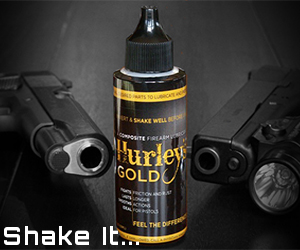Hi All,
With all the conflicting information out there about annealing, I decided to experiment a bit.
I'd heard I needed a pan of water; that no, a air cooling was fine; to make the neck glow and to keep the neck from glowing and the flame from changing color, as either indicated a cooking-off of zinc from the copper (zinc melts at about 790°).

Structural changes begin in brass at 650°, so I used a TempilStik crayon that turns to liquid at that temperature.
I marked the case in three places: 1/4" below the shoulder, halfway down the case body, and at the head.
The TempilStik melted below the shoulder at 8 seconds. An additional 2 seconds did not melt the crayon halfway down the body, so it looks like for this particular setup, which is a 9/16" deep wall socket stuck in an electric screwdriver, 10 seconds per case, air cooled, gives adequate annealing without burning out the zinc.
Josh
With all the conflicting information out there about annealing, I decided to experiment a bit.
I'd heard I needed a pan of water; that no, a air cooling was fine; to make the neck glow and to keep the neck from glowing and the flame from changing color, as either indicated a cooking-off of zinc from the copper (zinc melts at about 790°).
Structural changes begin in brass at 650°, so I used a TempilStik crayon that turns to liquid at that temperature.
I marked the case in three places: 1/4" below the shoulder, halfway down the case body, and at the head.
The TempilStik melted below the shoulder at 8 seconds. An additional 2 seconds did not melt the crayon halfway down the body, so it looks like for this particular setup, which is a 9/16" deep wall socket stuck in an electric screwdriver, 10 seconds per case, air cooled, gives adequate annealing without burning out the zinc.
Josh






